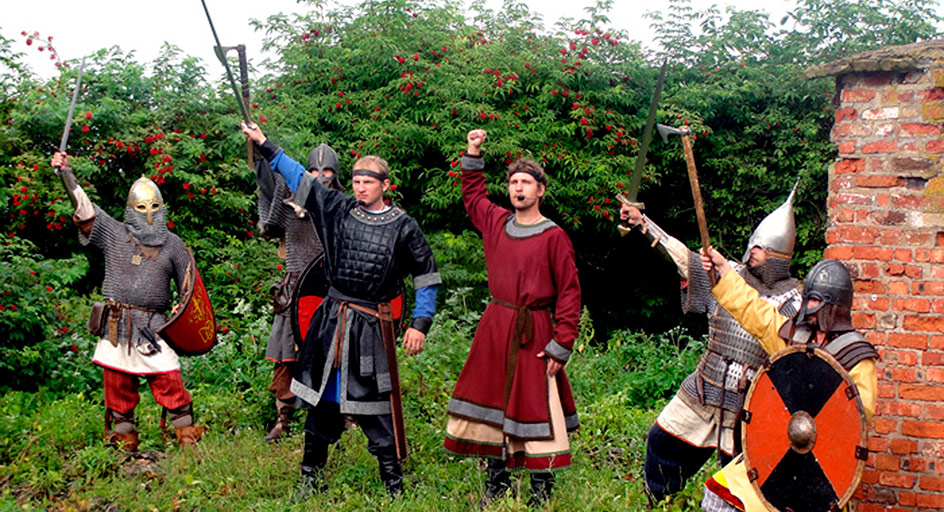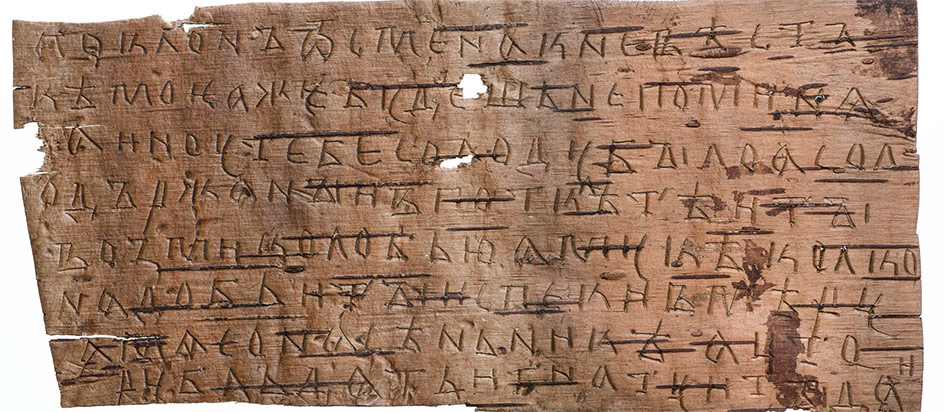
Over here people used to wear leather boots instead of bast shoes, the streets were cobbled from ancient times, the commoners were in correspondence with each other, and all the rulers were welcomed and banished whenever the Novgorodians wanted. Over here you can find yourself standing at the very place from where- as the legend says – an idol of murderous Perun the pagan Deity was thrown into the water of the Volkhov river to get drown, you can swim in the lake on the banks of which Sadko the merchant sang his entrancing songs, participate in martial performances of Novgorod vityazes («knights») of these days. Over here in this very place you can witness in full the cross-time native atmosphere of Russian Land.
The oldest city in Russia, the cradle of Russian democracy, the medieval centre of trade and crafts, the leading partner of the Hanseatic League of 12th – 17th cc., the link between medieval Europe and Russia and the borderline between two civilizations. All these are descriptions of Veliky Novgorod.
For the first time the word «Novgorodians» was spotted in the documents of 859. There are still a lot of scientists’ disputes on the fixed date of Novgorod foundation («nov» for «new», «gorod» for «town») and location of an «old» town. These days the leading version states «old» town as so-called Gorodishche (Hill Fort) that was on the right bank of the Volkhov river 2 km away from the city of today. It might probably be the ex-residence of Rurik the Prince who was invited to reign in Novgorod in 9th c. and then started the dynasty of the Rurikoviches («Rurikovich» for “son of Rurik”). In 10th c. the town was moved down the river to a new place and called Novgorod.
The Birthplace of Russian democracy
As soon as Kiev was conquered by Oleg the Prince accompanied with Novgorod troops and a single state Kievskaya Rus’ was established, Novgorod turned into the second major centre of the new state. There was time when Vladimir the Red Sun and his son Yaroslav the Wise reigned in here. But in 1136 freedom principle appears in Novgorod: thus, since then they were Novgorodians who decided which prince should reign in the town. The duration of governing was also up to their decision. Since the late 13th c. prince were invited no more. By that time Veliky Novgorod turned into the capital of veche republic («veche» for «folk gathering») of Novgorod Land. Veche decided war and peace issues, passed laws and entered into contracts and treaties with other lands as well elected the church hierarch archbishop of Novgorod who was in fact the head of Novgorod veche republic since 15th c. The Novgorod republic came to its end in 1478 when the Moscow troop won the Novgorod one in the Battle of Shelon. Novgorod and its lands entered a centralized state of Moscow Rus’, thus, making it five times as much! Nevertheless till the early 18th c. Novgorod kept its importance as a centre of international trade and crafts due to advantageous geographical position – it was a crossing point of the trade route from the Varangians to the Greeks, connecting the Baltic and the Mediterranean, and the one to the East through Volga region. Novgorod had trade contacts with a number of lands: from Flanders and Hanseatic cities and towns to Ugric lands, from Scandinavia to Astrakhan and Constantinople.

The history of Novgorod is full of events. Here are the major ones, in chronological order:
Starting from the middle of the 20th century, systematic archaeological excavations are held on a large scale within the city borders and at the Rurik's Gorodische. Local and visiting researchers, students and schoolchildren participate in these excavations. During this time, were found over 2 thousand of lead seals, a large number of weaponry, jewelry, household utensils, and various music instruments. The subject of great pride of the historians is over a thousand of birch-bark scrolls of various contents and in a perfect condition. Among the scrolls there are business contracts, love letters, culinary recipes, commentaries to the Bible, commercial estimates, and even the pupils' scribbles. These finds demonstrate the total literacy of the inhabitants of medieval Novgorod, including women and commoners, and help to understand the details of our ancestors' life and their ways. We cannot but admire the finely crafted items made of wood, metal, leather and glass, multitude and richness of the finds and the amount of the birch-bark scrolls. All these things tell us about former grandeur, power and importance of Veliky Novgorod as a political, religious, trading and cultural centre of ancient Russia.

Centre of International Trade
Due to Novgorod there was a thriving trade between old-Russia and Hansa. Thus, the leading medieval Russian exports included furs and wax, being highly valued all around Europe. There were a lot of western European monarchs and persons of distinctions wearing expensive fur coats, and hats made of rich Novgorod furs of ermine, sable, marten; Russian wax candles were lit on the grand altars of gothic cathedrals. Sometimes hunting birds – falcons – also appear to have been exported, as well as leather and some leather items. By the way, Novgorod footwear was also highly valued.
From the East Novgorod received the goods that later appeared in the markets of all the other Russian cities and towns. And it was Russian merchants who profited from delivering them all around Russia as German tradespeople sold their goods just in Novgorod. Imported merchandise included expensive fabrics, broadcloth, and nonferrous metal, used in crafts for which Novgorodian craftsmen were famed.
Hansa merchants brought in Greek, French, Spanish and, of course, Rhine wine as well as Baltic herring, salt and even bread in years of bad harvest.
Hansa partners helped Novgorod out of difficulties more than once. Thus, according to one chronicler, in 1231 it was seed from Hansa that saved Novgorod from the serious consequences of spreading famine.
Hansa and old-Russia practiced both wholesome and barter trade. Money was used only to measure the value of goods. By the way, the trade itself took place not at the Marketplace but in the Hansahof and in the yards of Novgorodians where Russian and German merchants examined the goods they needed, chose the best and arranged deals.
Trade relations between Hansa and Novgorod were regulated by some special agreements and the regulations of the Hansahof called «Skra» These agreements guaranteed safe trading. Thus, the essential articles were ones about providing a «secure trade route» to Novgorod land for Hanseatic merchants and to the Baltic for Novgorodians.
One of the leading Hanseatic depots of Europe was founded in Veliky Novgorod.
St. Olavhof («hof» for «courtyard», German) and St. Peterhof formed the Novgorod Hanseatic depot that was located in Yaroslav’s Court, the medieval marketplace. Surrounded by a log stockade, the courtyards looked like fortresses.
Inside the courtyards there were churches, at the walls of which the stevens («gatherings») were held and all the burning issues of those days were decided; two-storied houses called dorises where the merchants with their stewards and trainees lived; klet’s, a housing for holding trade and storing goods; a great chamber, a stewards’ room, a mill, a brewery, a banja (sauna) and a hospital. Interesting enough, the Novgorod Hanseatic depot was the most isolated part of the city in which it was located. Even Novgorod officials could not interfere with the internal affairs of the Hansahof.
.jpg)
Participant of The Hanseatic Days of the Modern Age
The Hanseatic League of the Modern Age, founded in 1980 on the traditions of medieval Hansa, can be called a prototype of the European Union by right. In 1993 Novgorod became the first Russian member of the Hanseatic League of Modern Age and annually since then it has presented its medieval traditions at the International Hanseatic Days.
In its 1150th anniversary celebration (2009) Novgorod was hosting the 29th International Forum «Hanseatic Days of the Modern Age», being held under the motto «Expanding the borders».